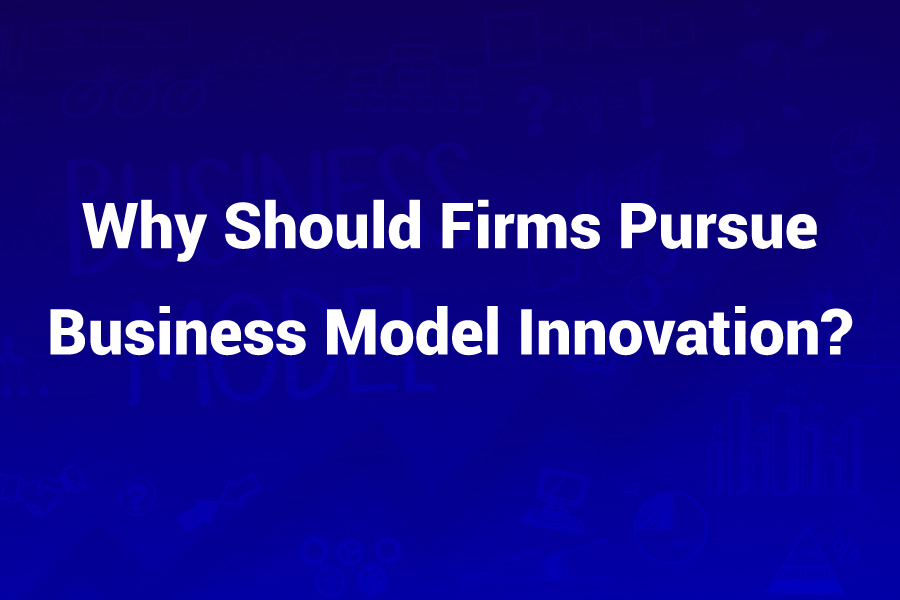
In today’s rapidly evolving business landscape, standing still isn’t an option—it’s a death sentence. Companies that cling to traditional approaches risk obsolescence as disruptive technologies, changing consumer preferences, and global challenges reshape industries. The question isn’t whether to innovate, but how quickly and effectively you can transform. That’s why understanding why should firms pursue business model innovation has become critical for leaders who want their organizations to thrive rather than merely survive.
Defining Business Model Innovation
Business model innovation goes beyond product improvements or service enhancements—it fundamentally reimagines how a company creates, delivers, and captures value. While traditional innovation focuses on what a company offers, business model innovation transforms how it operates and generates revenue. This might involve changing revenue streams, targeting new customer segments, or completely restructuring operations.
At its core, business model innovation challenges the assumptions that have defined an industry. It asks leaders to question everything: Who are our customers? What do they truly value? How can we deliver that value differently and more efficiently? This mindset shift is essential in a world where digital disruption and changing consumer behaviors continuously rewrite the rules of competition.
Competitive Advantage in a Crowded Market
One compelling answer to why should firms pursue business model innovation lies in its power to create sustainable competitive advantage. In saturated markets where product features can be quickly copied, a unique business model becomes a powerful differentiator that’s harder for competitors to replicate. Consider how Netflix transformed from DVD rentals to streaming, creating a model that traditional media companies struggled to match.
Business model innovation allows companies to rewrite the rules of competition in their favor. By changing how value is created and captured, firms can escape the trap of competing solely on price or features. Instead, they create new markets or redefine existing ones, establishing leadership positions that competitors can’t easily challenge. This strategic advantage often translates into higher margins, customer loyalty, and market share that compounds over time.
Creating Blue Oceans
Business model innovation often leads to what strategy experts call “blue oceans”—uncontested market spaces where competition is irrelevant. Rather than fighting over existing customers with similar offerings, innovative companies create new demand and make the competition irrelevant. [SOURCE: Blue Ocean Strategy] highlights how firms like Cirque du Soleil reinvented the circus industry by targeting adults rather than children and combining theater with circus elements.
When firms pursue business model innovation, they unlock opportunities to serve unmet customer needs or serve existing customers in entirely new ways. This approach shifts the focus from beating competitors to creating leapfrog value for customers and the company simultaneously. The result is often a more sustainable competitive position that can generate superior returns for years.
Adapting to Market Disruptions
Market disruptions have become the norm rather than the exception. From digital technologies to global pandemics, external forces can render established business models obsolete almost overnight. This reality underscores why should firms pursue business model innovation as a survival strategy, not just a growth opportunity.
Companies that regularly reinvent their business models demonstrate greater resilience in the face of change. They’re better positioned to pivot when market conditions shift, turning potential threats into opportunities. During the COVID-19 pandemic, for example, restaurants that quickly adopted delivery models, meal kits, or virtual cooking classes were more likely to survive than those clinging to dine-in service alone.
Building Adaptive Capabilities
Business model innovation builds organizational muscles that enhance adaptability. Firms that regularly question and refine their business models develop capabilities for sensing market changes, experimenting with new approaches, and scaling successful innovations quickly. These adaptive capabilities become valuable assets in volatile environments.
The process of business model innovation also helps organizations identify vulnerabilities in their current models. By stress-testing assumptions and exploring alternatives, companies can address weaknesses before they become existential threats. This proactive approach to resilience is far more effective than reactive crisis management when disruptions occur.
Enhancing Customer Value Creation
At its heart, business model innovation is about finding better ways to create and deliver value to customers. Traditional models often focus on products or services, but innovative models look at the entire customer journey and experience. This customer-centric approach is a key reason why should firms pursue business model innovation in today’s experience economy.
Innovative business models can solve customer problems in fundamentally better ways. Consider how Dollar Shave Club disrupted the razor industry not with a better razor, but with a subscription model that delivered convenience and cost savings. Similarly, companies like Uber and Airbnb didn’t improve taxis or hotels—they created entirely new value propositions around accessibility, price transparency, and user experience.
Deepening Customer Relationships
Business model innovation often leads to deeper, more profitable customer relationships. By shifting from transactional to relational models, companies can increase customer lifetime value and loyalty. Subscription models, membership programs, and platform ecosystems all represent innovative approaches to building ongoing customer relationships rather than one-time sales.
These relationship-based models also generate valuable data and insights that can fuel further innovation. As companies better understand customer needs and behaviors, they can continuously refine their offerings and experiences. This virtuous cycle of improvement creates a competitive advantage that compounds over time, making it increasingly difficult for competitors to catch up.
Diversifying Revenue Streams
Another compelling answer to why should firms pursue business model innovation is the opportunity to diversify revenue streams. Traditional businesses often rely on single, straightforward revenue sources that leave them vulnerable to market shifts. Innovative models create multiple, complementary revenue streams that provide stability and growth potential.
Diversification through business model innovation can take many forms. A product company might add subscription services, a retailer might develop marketplace platforms, or a content creator might leverage multiple monetization methods. These diverse revenue streams not only increase overall income but also reduce dependence on any single source, creating a more resilient financial foundation.
Unlocking Hidden Value
Business model innovation often reveals untapped value within existing assets and capabilities. Companies discover that they can monetize aspects of their business that were previously overlooked. For example, Amazon leveraged its excess server capacity to create Amazon Web Services, now a highly profitable business unit that generates more operating income than its retail operations.
By reimagining how assets can be used and value can be captured, innovative firms unlock new revenue potential without necessarily investing in entirely new capabilities. This approach to innovation is often more capital-efficient than developing new products or entering new markets from scratch, making it particularly attractive for resource-constrained organizations.
Improving Operational Efficiency
Business model innovation isn’t just about revenue—it’s also about transforming how value is delivered. Many innovative models fundamentally change operational processes, leading to significant efficiency gains and cost advantages. This operational transformation is a critical aspect of why should firms pursue business model innovation in competitive markets.
Digital platforms, for example, create powerful network effects that reduce marginal costs and increase value as more users join. Sharing economy models maximize asset utilization, turning underused resources into revenue generators. Direct-to-consumer models eliminate intermediaries, capturing more value while reducing costs and improving customer relationships.
Leveraging Technology and Data
Modern business model innovation increasingly leverages digital technologies and data analytics to drive efficiency. Artificial intelligence, IoT, blockchain, and other technologies enable new operational models that were previously impossible. These technologies allow companies to automate processes, optimize resource allocation, and make data-driven decisions that enhance performance.
The operational improvements from business model innovation often create compounding advantages. Lower costs enable competitive pricing, while better processes improve customer experiences and employee satisfaction. These benefits reinforce each other, creating a virtuous cycle of improvement that drives long-term success.
Mitigating Risks and Future-Proofing
In an uncertain world, business model innovation serves as a powerful risk management strategy. By continuously evolving their business models, firms reduce their vulnerability to market shifts, competitive threats, and technological disruptions. This risk mitigation aspect is essential to understanding why should firms pursue business model innovation as a strategic imperative.
Diversified business models spread risk across multiple value propositions and revenue streams. If one aspect of the business faces challenges, others can provide stability and resources for adaptation. This approach contrasts with traditional models that concentrate risk in a single business approach, creating vulnerability when market conditions change.
Building Long-Term Resilience
Business model innovation builds organizational resilience by developing capabilities for continuous adaptation. Companies that regularly reinvent their business models develop cultures and processes that embrace change rather than resist it. This cultural shift is perhaps the most valuable long-term benefit of business model innovation.
Organizations that excel at business model innovation create self-reinforcing systems of improvement. They develop the ability to sense market changes, experiment with responses, learn quickly, and scale successful innovations. These capabilities become embedded in the organization’s DNA, creating lasting competitive advantage that transcends any single business model.
Implementing Business Model Innovation
Understanding why should firms pursue business model innovation is one thing; implementing it effectively is another. Successful business model innovation requires a systematic approach that balances creativity with discipline. It begins with developing a deep understanding of customer needs and market dynamics, then challenging core assumptions about how value is created and delivered.
The innovation process should be structured yet flexible, allowing for exploration while maintaining focus on strategic objectives. Many successful companies use approaches like design thinking, lean startup methodologies, or business model canvas techniques to structure their innovation efforts. These frameworks help teams generate, test, and refine new business model concepts efficiently.
Overcoming Implementation Challenges
Business model innovation often faces significant internal resistance. Established processes, metrics, and mindsets can create powerful barriers to change. Overcoming these challenges requires strong leadership commitment, effective change management, and clear communication about the rationale for innovation.
One effective approach is to create dedicated innovation teams or labs that operate with some autonomy from the core business. These teams can experiment with new models without being constrained by existing practices. As innovations prove successful, they can be gradually integrated into the broader organization, bringing others along through demonstrated results rather than theoretical arguments.
Measuring Success and ROI
To justify continued investment in business model innovation, firms need effective ways to measure success and return on investment. Traditional financial metrics may not capture the full value of innovative models, especially in early stages. Companies need to develop balanced scorecards that include both financial and non-financial measures.
Key metrics might include customer acquisition costs, lifetime value, retention rates, market share in new segments, and the percentage of revenue from new business models. Leading indicators like customer engagement, employee innovation metrics, and experiment velocity can help track progress before financial results materialize. [LINK: Business Model Innovation Metrics] provides a comprehensive framework for measuring innovation success.
Learning from Failure
Not all business model innovations will succeed, and that’s okay. In fact, failure is an essential part of the innovation process. The most innovative companies create cultures that treat failures as learning opportunities rather than reasons for punishment. This psychological safety encourages experimentation and risk-taking, which are essential for breakthrough innovations.
Effective organizations implement systematic approaches to capturing and sharing learnings from both successes and failures. They document insights, refine assumptions, and apply lessons to future innovation efforts. This learning orientation compounds over time, making each subsequent innovation effort more informed and more likely to succeed.
Conclusion
The question of why should firms pursue business model innovation has a clear answer: it’s essential for survival and success in today’s dynamic business environment. Business model innovation creates competitive advantage, enhances adaptability, deepens customer relationships, diversifies revenue, improves efficiency, and mitigates risks. These benefits combine to create organizations that are more resilient, valuable, and prepared for the future.
Business model innovation isn’t a one-time project but an ongoing capability that companies must develop and nurture. It requires strategic commitment, organizational learning, and a willingness to challenge assumptions. Firms that master this discipline position themselves not just to survive disruption but to drive it, creating sustainable advantage in an ever-changing world. The time to start building business model innovation capabilities is now—before market forces make it a necessity rather than a choice.
FAQ
What are the main drivers of business model innovation?
The main drivers of business model innovation include technological disruption, changing customer expectations, competitive pressures, regulatory changes, and sustainability concerns. Digital technologies have lowered barriers to entry and enabled new ways of creating value, while customers increasingly demand personalized, convenient experiences. Competitive pressures push companies to differentiate themselves, and regulatory changes can create new opportunities or constraints. Additionally, growing awareness of environmental and social issues is driving many firms to innovate their models to address sustainability challenges.
How can companies overcome resistance to business model innovation?
Companies can overcome resistance to business model innovation through strong leadership commitment, effective change management, and creating psychological safety for experimentation. Leaders must clearly communicate the strategic rationale for innovation and model the desired behaviors. Creating dedicated innovation teams with some autonomy from core business constraints can help overcome bureaucratic resistance. Additionally, celebrating learning from failures, providing resources for experimentation, and aligning incentives with innovation objectives can help shift organizational culture to embrace change rather than resist it.
Why do some business model innovations fail while others succeed?
Business model innovations often fail due to insufficient customer insight, misalignment with organizational capabilities, resistance to change, or flawed implementation strategies. Successful innovations typically begin with deep customer understanding and address genuine unmet needs. They align with the company’s strengths and culture while challenging assumptions appropriately. Successful innovations also benefit from strong leadership support, adequate resources, effective change management, and a willingness to experiment and learn quickly. The most successful business model innovations balance vision with pragmatism, pursuing transformative change while managing risks effectively.





